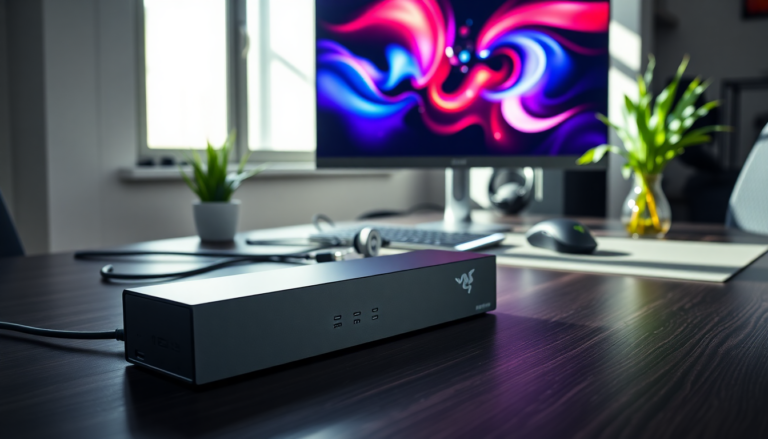Argomenti trattati
Razer’s recent launch of the Core X V2 and Thunderbolt 5 dock is turning heads in the world of external GPUs. With the Core X V2 promising to accommodate larger graphics cards, it stirs up a debate about its value and usability in today’s tech landscape. As tech enthusiasts and gamers dive into these new offerings, it’s essential to explore their implications and how they fit into the broader high-performance computing scene. So, is this upgrade really worth it?
The Lowdown on Razer’s Latest Products
The Core X V2 builds on the solid reputation of its predecessor, the well-loved Core X from the Thunderbolt 3 era. This earlier model was celebrated for its ability to support a hefty three-slot graphics card and came with a robust 650W power supply. The new Core X V2 ups the ante by allowing for even larger four-slot GPUs. But here’s the catch: you’ll need to shell out extra cash for both the graphics card and the power supply. This begs the question: does the new model truly enhance your user experience, or does it just complicate the purchasing process?
External GPU docks have always served as a lifeline for users looking to upgrade their systems, especially those using laptops with lower-end graphics. The Core X V2, while catering to more substantial hardware, seems to drop the ball on some conveniences found in earlier models, like integrated USB ports and Ethernet connections. Now, users are faced with the added expense of Razer’s Thunderbolt dock, priced at a steep $349.99. Is this really what gamers want when they’re already spending big?
Diving Into Features and Pricing
Razer’s pricing strategy has undergone a noticeable shift alongside its product lineup. The original Core X debuted at $299, while the Core X V2 comes with a higher price tag, even though it skips some previously included components, like the power supply. This price hike raises eyebrows regarding the Core X V2’s perceived value, especially when many gaming laptops today come equipped with high-performance GPUs out of the box.
On top of that, there’s Razer’s Thunderbolt 5 dock, which comes in two styles: the Mercury White at $389.99 and the RGB Chroma at $399.99. With these options, potential buyers face a tough decision. Are the enhanced connectivity options worth the extra expense? The dock does feature multiple ports, including support for three 144Hz 4K displays, which could be a game-changer for users needing that extra graphical power.
Looking Ahead: Trends and Practical Considerations
As we gaze into the future, the widespread adoption of Thunderbolt 5 technology seems a bit distant. Right now, high-performance gaming laptops are the main players packing this tech, which might limit the appeal of external GPUs for those seeking budget-friendly gaming solutions. Sure, the Core X V2 is compatible with Thunderbolt 4, but the real benefits of Thunderbolt 5 will shine when paired with top-tier hardware.
For those considering a purchase, it’s crucial to assess your specific needs and determine if investing in Razer’s latest products aligns with your gaming and computing aspirations. In the world of external GPUs, the focus should be on maximizing your return on investment, ensuring that each purchase genuinely enhances your computing experience.
In conclusion, while Razer’s Core X V2 and Thunderbolt 5 dock bring exciting advancements in external GPU technology, they also prompt us to rethink our priorities in this fast-paced market. As technology continues to evolve, staying informed about the value and utility of new products is essential. After all, you want your investments to lead to significant improvements in performance and capability, right?

